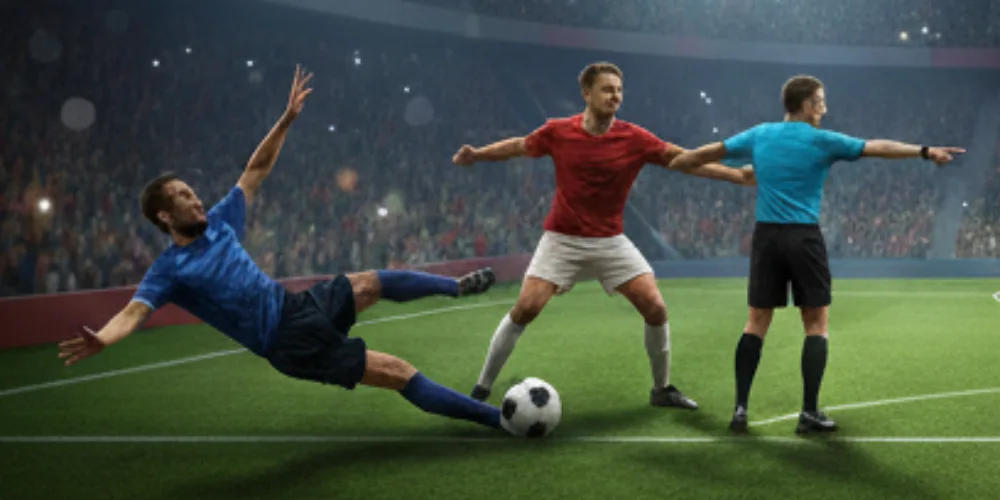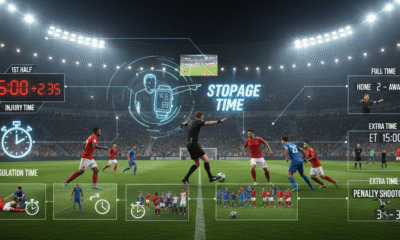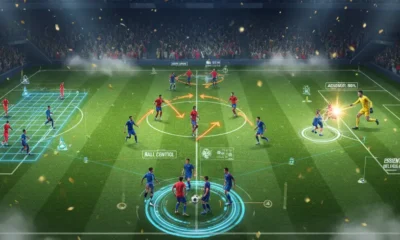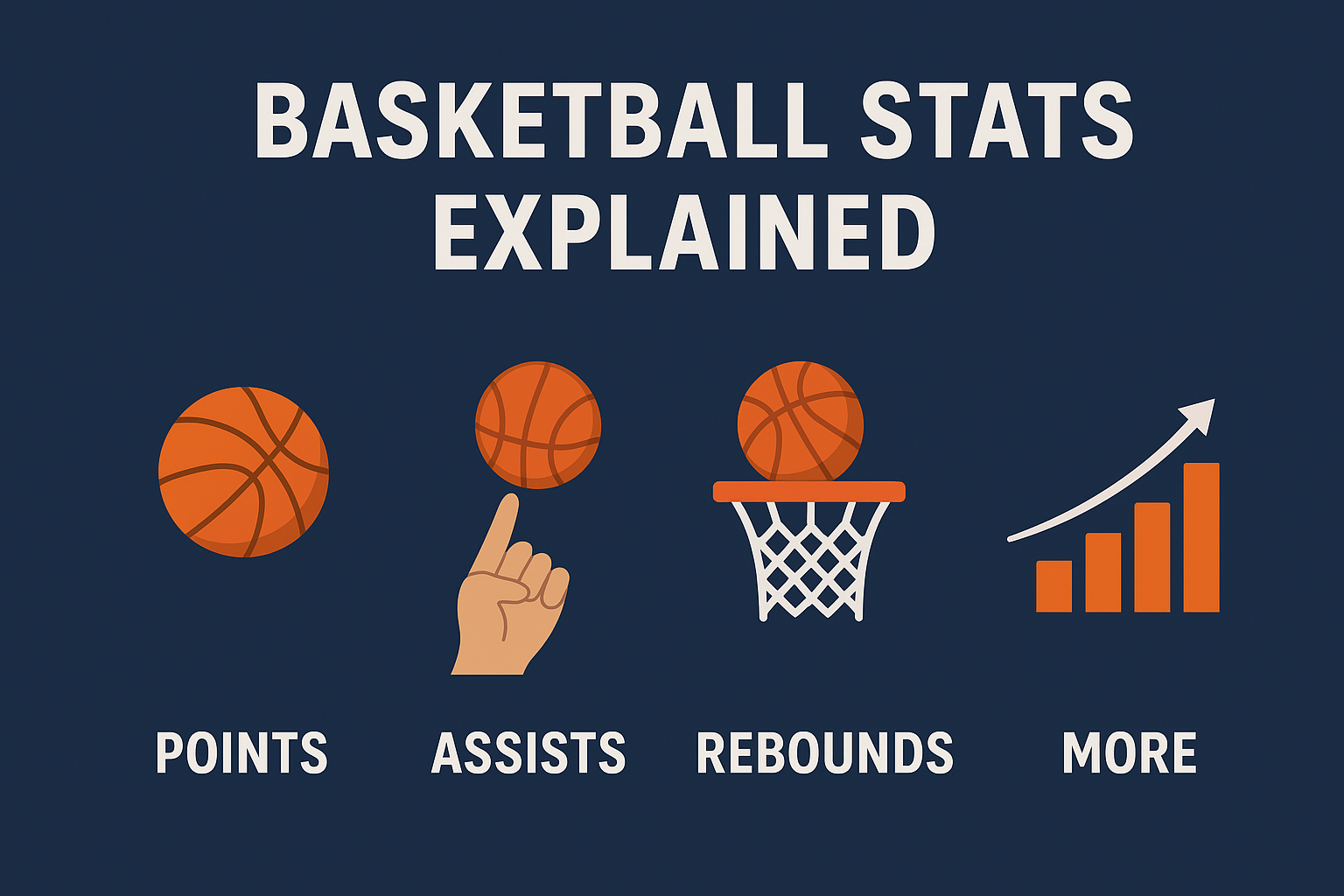
Soccer is a game of rhythm and precision. Every pass, every tackle, and every sprint happens within a set of rules that shape the match’s balance. When a player crosses that line — by accident or intent — the referee steps in. Fouls and penalties are not just interruptions; they define the game’s fairness, emotion, and drama.
What Is a Foul in Soccer
A foul in soccer happens when a player breaks the rules of fair play while the ball is in motion. These include tripping, holding, pushing, charging, kicking, or jumping at an opponent. Some fouls seem minor, others can shift a match completely. The referee decides based on intent, contact, and impact.
Most fouls result in a free kick. If the foul occurs inside the penalty area, the opposing team gets a penalty kick — a one-on-one between striker and goalkeeper that can decide championships.
What Is a Penalty in Soccer
A penalty in soccer is awarded when a defending player commits a direct free-kick foul inside their own penalty box. The ball is placed 12 yards from the goal line. The attacker faces the goalkeeper alone.
The pressure in that moment is immense. Some players strike clean and calm; others crumble. World Cups have been won and lost from this exact spot.
What Is a Yellow Card in Soccer
A yellow card is a formal warning. It signals that the referee has seen misconduct and expects better discipline.
Players receive yellow cards for actions like delaying play, dissent, reckless tackles, or unsporting behavior. Two yellow cards in one match equal a red card.
It’s a psychological game. A player with one yellow often plays differently — more cautious, less daring. Coaches must decide whether to keep them on the field or make a substitution before the risk becomes costly.

What Is a Red Card in Soccer
A red card means expulsion. The player must leave the field immediately, and their team plays with one fewer player for the rest of the match.
Red cards are shown for violent conduct, serious foul play, denying an obvious goal-scoring chance, or offensive language. Some are clear. Others fuel years of debate.
The sight of a red card changes the air in the stadium. One flash of color can silence thousands.
What Is a Handball in Soccer
A handball occurs when a player deliberately touches the ball with their hand or arm. The rule is simple in writing but complex in practice. Referees must judge intent and position.
If the hand or arm makes the body unnaturally larger, it is usually considered a handball. When it happens inside the box, it leads to a penalty kick. When outside, it gives the opponent a direct free kick.
What Is an Offside in Soccer
Offside is one of soccer’s most misunderstood rules. A player is offside if they are nearer to the opponent’s goal line than both the ball and the second-last defender when the ball is played to them.
It prevents attackers from waiting near the goal for an easy score. Referees and assistants must judge it in real time, often within fractions of a second. Today, VAR (Video Assistant Referee) technology helps review these moments — but controversy still remains.
Famous Fouls and Referee Mistakes That Changed Football
Soccer’s history is shaped by moments when rules were tested, bent, or broken. A single whistle, or the absence of one, can echo for decades.
1. Diego Maradona’s “Hand of God” (1986 World Cup)
Perhaps the most famous foul never called. Maradona punched the ball into England’s net, and the referee missed it. The goal stood. Argentina won the match and went on to win the tournament.

2. Zinedine Zidane’s Headbutt (2006 World Cup Final)
In his last professional game, Zidane lost control after a verbal exchange with Marco Materazzi. His headbutt earned a red card. France lost to Italy on penalties. The image remains one of the sport’s most iconic moments of rage and regret.
3. South Korea vs. Italy and Spain (2002 World Cup)
Refereeing decisions in South Korea’s favor — disallowed goals and soft fouls — sparked global outrage. FIFA later admitted that the officiating was poor. Many believe those matches changed how video review technology was later introduced.
4. Thierry Henry’s Handball (France vs. Ireland, 2009)
In a World Cup qualifier, Henry handled the ball before assisting the decisive goal. The referee did not see it. Ireland’s hopes of qualification ended. The incident reignited debates about introducing video replay in football.
5. Frank Lampard’s Disallowed Goal (England vs. Germany, 2010 World Cup)
Lampard’s shot crossed the line by several inches but was not given. Germany won 4–1. The mistake led directly to the adoption of goal-line technology in professional football.
These moments remind fans that the laws of the game evolve through human error as much as through play.
What Might Change Next: Potential Law Revisions and Trials
The bodies that govern soccer’s rules are exploring several possibilities to improve refereeing, player behaviour, and game flow. While none of these changes are final at elite levels, they show how the game may evolve.
Blue Card / Sin-Bin Trial
Rule-makers considered a “blue card” to accompany the existing yellow and red cards. The idea: when a player commits a cynical foul or shows dissent, the referee could show a blue card and send them off for ten minutes (a sin-bin period). Two blue cards, or a blue combined with a yellow, would result in a red card. The objective: deter tactical fouls and improve respect for officials.
The concept gained traction in lower-level competitions but faced strong pushback. FIFA president Gianni Infantino stated that FIFA is “completely opposed” to blue cards at elite level and that “there is no blue card” in the Premier League or international top matches. So far, if trials continue, they will remain away from the top tiers of the game.
Technology and Behaviour Trials
Soccer’s law-making body is also looking at trials involving referee zones (only captains can speak to referees), “cooling-off periods” during mass confrontations, and stricter review of certain handball decisions. These measures aim to reduce stoppages, limit dissent, and give clearer guidance on serious fouls. Another idea under review is declaring that when a penalty kick is taken and saved, the ball becomes dead immediately. That would erase the rebound-goal scenario that has fueled controversy in major tournaments.
What This Means for Players and Coaches
If any of these changes reach top-level competitions, players and coaches will need to adjust quickly. Tactical fouls might carry harsher immediate penalties. Referees will have new tools and protocols when dealing with dissent or cynical play. Clubs will need to train players to avoid behaviour that could lead to longer in-game exclusions or extra disciplinary action.
Timeline and Implementation
None of these changes has yet been approved for the highest level of play. Trials may begin at grassroots or lower-tier leagues. Full adoption in professional top leagues would require agreement by the International Football Association Board (IFAB) and broad buy-in from federations, leagues, and referees.
The Spirit Behind the Whistle
Soccer’s beauty lies in its imperfections. The rules are there to guide, but emotion and instinct still rule the field. Every yellow card carries tension, every penalty holds breath, every red card shifts destiny.
From local parks to packed stadiums, the same questions echo: Was it a foul? Was it fair? The referee answers with a single gesture, and the world reacts.











